The Master Of Music – HIFIMAN Susvara Planar Magnetic Headphones
HIFIMAN Susvara is the $6000 USD flagship, currently considered the best planar magnetic headphone created by most users, and it has every single one of HIFIMAN’s engineering marvels under the hood. Today we will review the Susvara and see how it pairs, how it matches with certain sources, as it is also infamously hard to drive and master. As this is the best pair of flagship headphones that we have reviewed to date, we will be comparing the HIFIMAN Susvara with other flagships, including Audeze LCD-5 (4500 USD), HIFIMAN He1000 Unveiled (2699 USD), Dan Clark Audio Expanse (3999 USD), and T+A Solitaire P-SE (3900 USD)
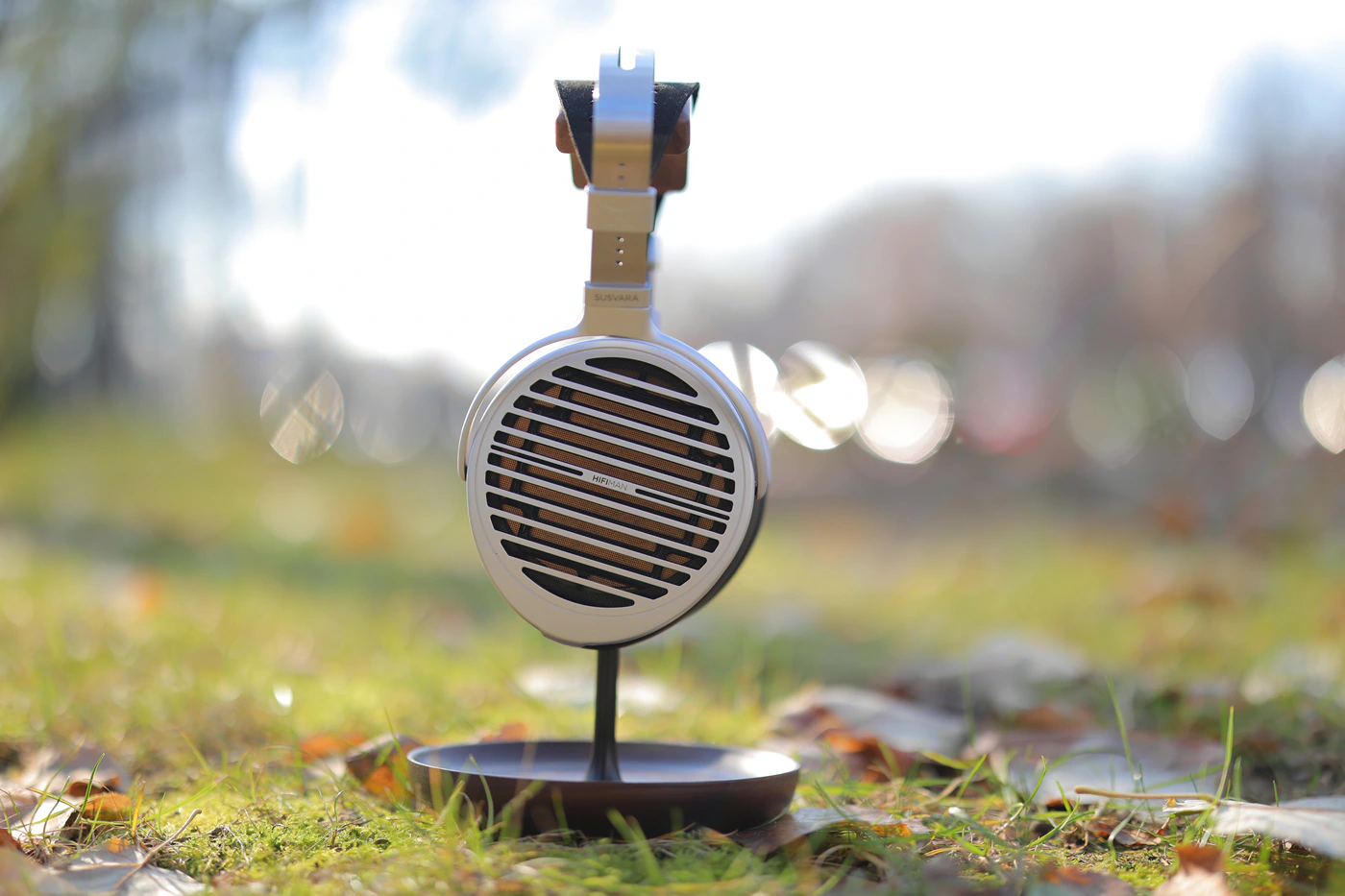
Introduction
In the Audiophile World, it all comes back to this one model, the pair of headphones considered the best and most wanted audiophile headphones in the whole world. HIFIMAN Susvara may look like a traditional pair of headphones, but it has a signature that makes people crowd to listen to them at audio events, and it made HIFIMAN one of the most popular headphone designers in the whole world. HIFIMAN in general produces some of the most interesting headphones, with usually an exceptional price / performance ratio, but Susvara does not have an affordable price at all, so what we try to see today is whether it outclasses everything else, and just what is everyone else raving about.
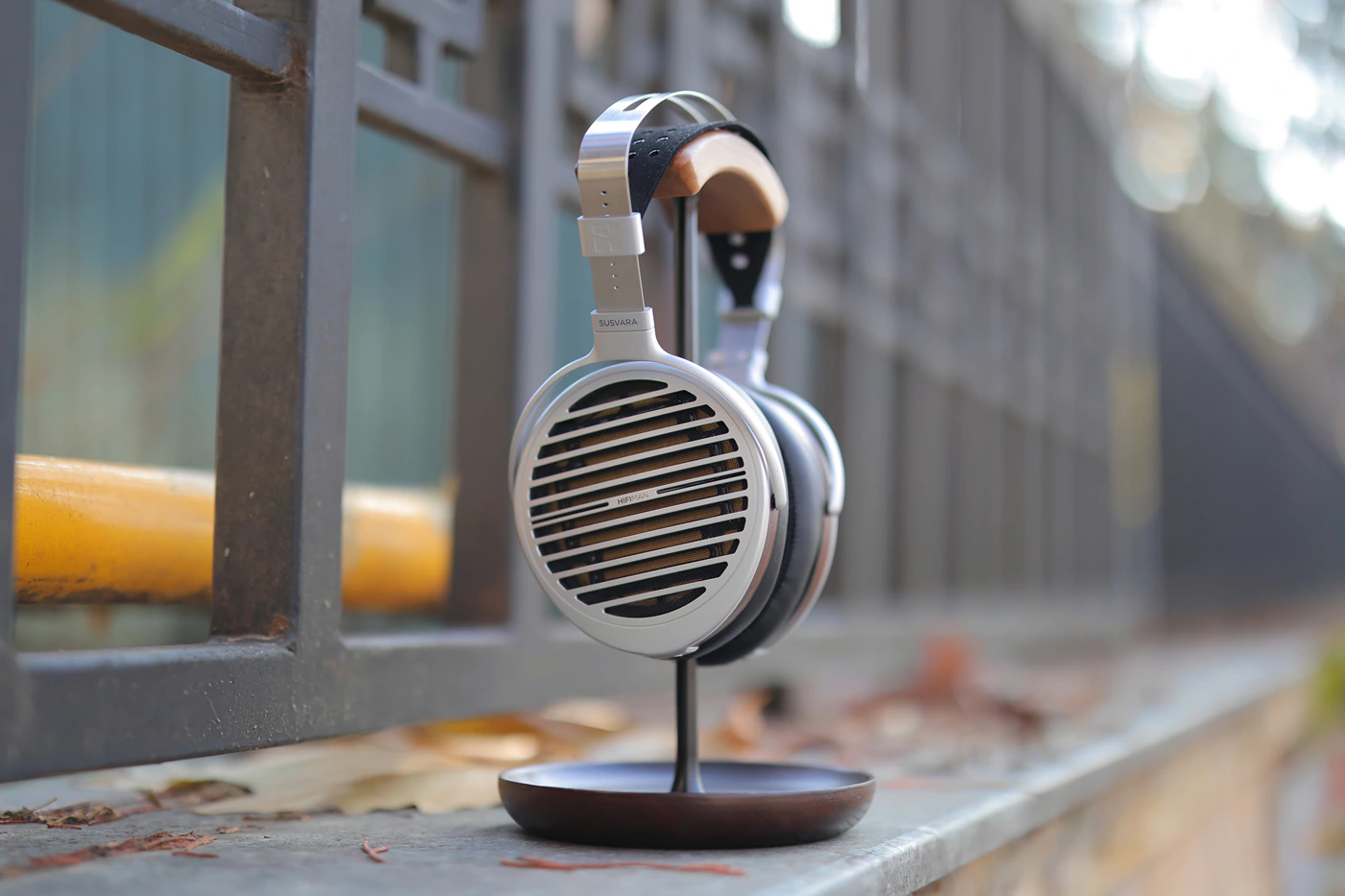
As an Amazon Influencer, I earn from qualifying purchases, and using the purchase links in my reviews helps me maintain this website and Youtube Channel. Huge thanks to HIFIMAN for providing the sample for this review, in exchange for my honest opinion.
Product Link
Amazon – https://amzn.to/3EFOJCb
Aliexpress – https://s.click.aliexpress.com/e/_omo7sp2
Build Quality / Aesthetics
You’ve heard us talk a lot about the Acoustically Invisible Stealth Magnets, but Susvara is where it all started, and it uses HIFIMAN’s most advanced piece of tech, implementing a driver that for the first time in the world managed to dramatically reduce the wave diffraction turbulence which degrades the integrity of the sound waves. The result is a sound that has a reduced distortion, and which is pure, harmonious in a tangible way. This is because the sound produced by Susvara can pass through the magnets without producing interference.
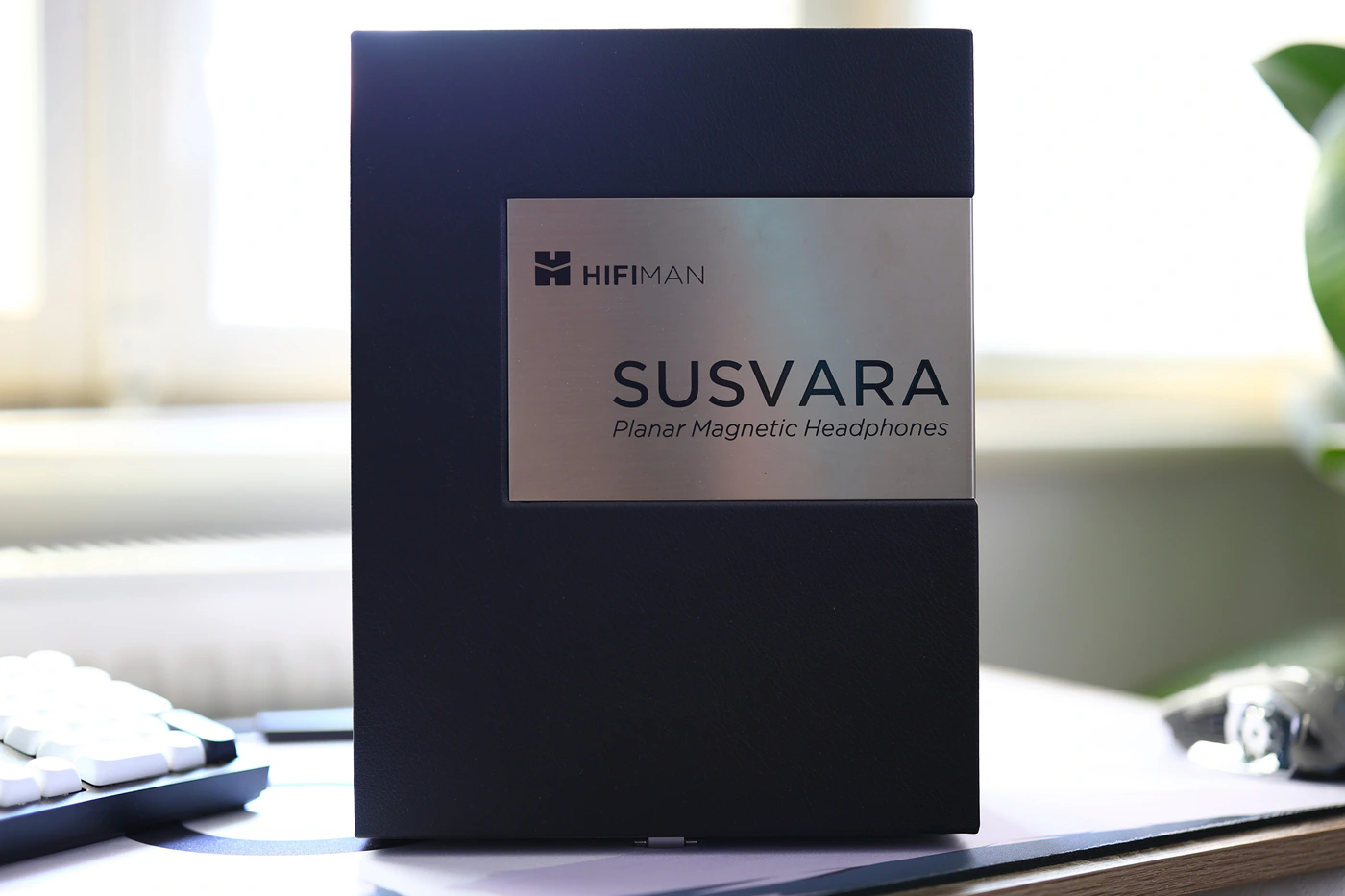
When it comes to the sonic degradation that is caused by the magnets, this is true for Electrostatic headphones too, as sound is degraded by the stator’s interference. Even Dynamic drivers usually suffer from this, and most dynamic drivers are limited in performance due to the distortion and vibration that happens across the diaphragm surface. While we did talk a lot about the acoustically stealthy magnets, HIFIMAN Susvara has the most advanced driver diaphragm, less than a millionth of a meter thin, with an extremely low mass, and which can produce tremendously low distortions and a highly dynamic response.
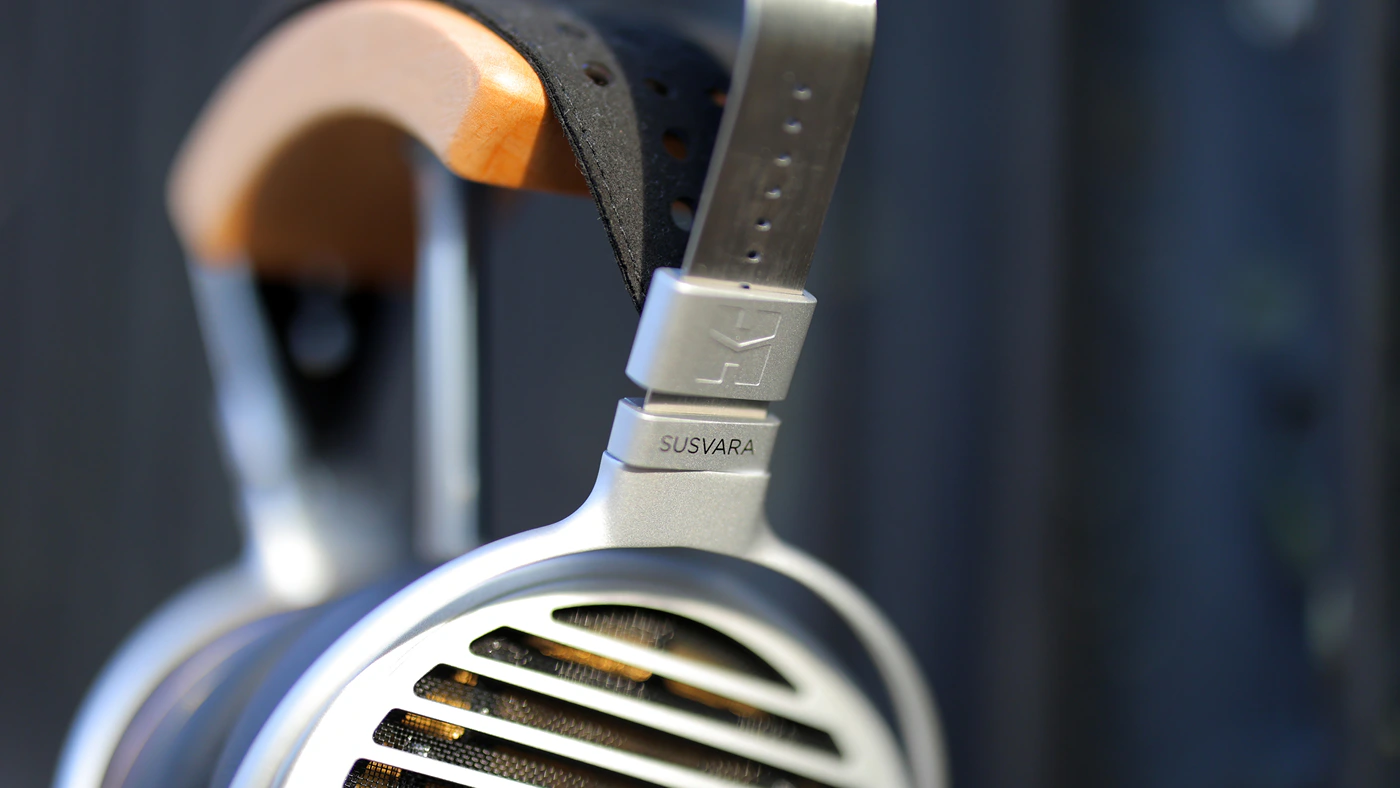
Susvara is the headphone that best combines this Nano Diaphragm and Stealth Magnets to produce the audio clarity and quality. Furthermore, Susvara is the first pair of headphones HIFIMAN introduced with the Window Shade earcups, which have been painstakingly optimized to avoid any resonant frequencies. This earcup design allows Susvara to protect the fine diaphragm and at the same time offer an aesthetically pleasing approach for the Susvara.
Fit / Comfort
HIFIMAN Susvara is the most comfortable headphone made by HIFIMAN to date, but it is not the largest, and instead it has a more compact approach than the HE1000 series, having a lower weight and less mass that would otherwise make them heavy. We get a good default cable, but the ergonomics of this cable are still not quite as good as what you can get from an aftermarket option, so I generally like to use them with upgrade cables. To get to the most comfortable headphone, HIFIMAN uses a dense sponge in the earpads, and they made the Susvara to have enough space for my ears, but while HE1000 has a larger earcup and smaller drivers, Susvara has a huge driver, but an earcup that has just enough space to fit the drivers, effectively using every single bit of space. This implies that you will hear less acoustic of the earcup, but more of the driver performance than with most headphones.
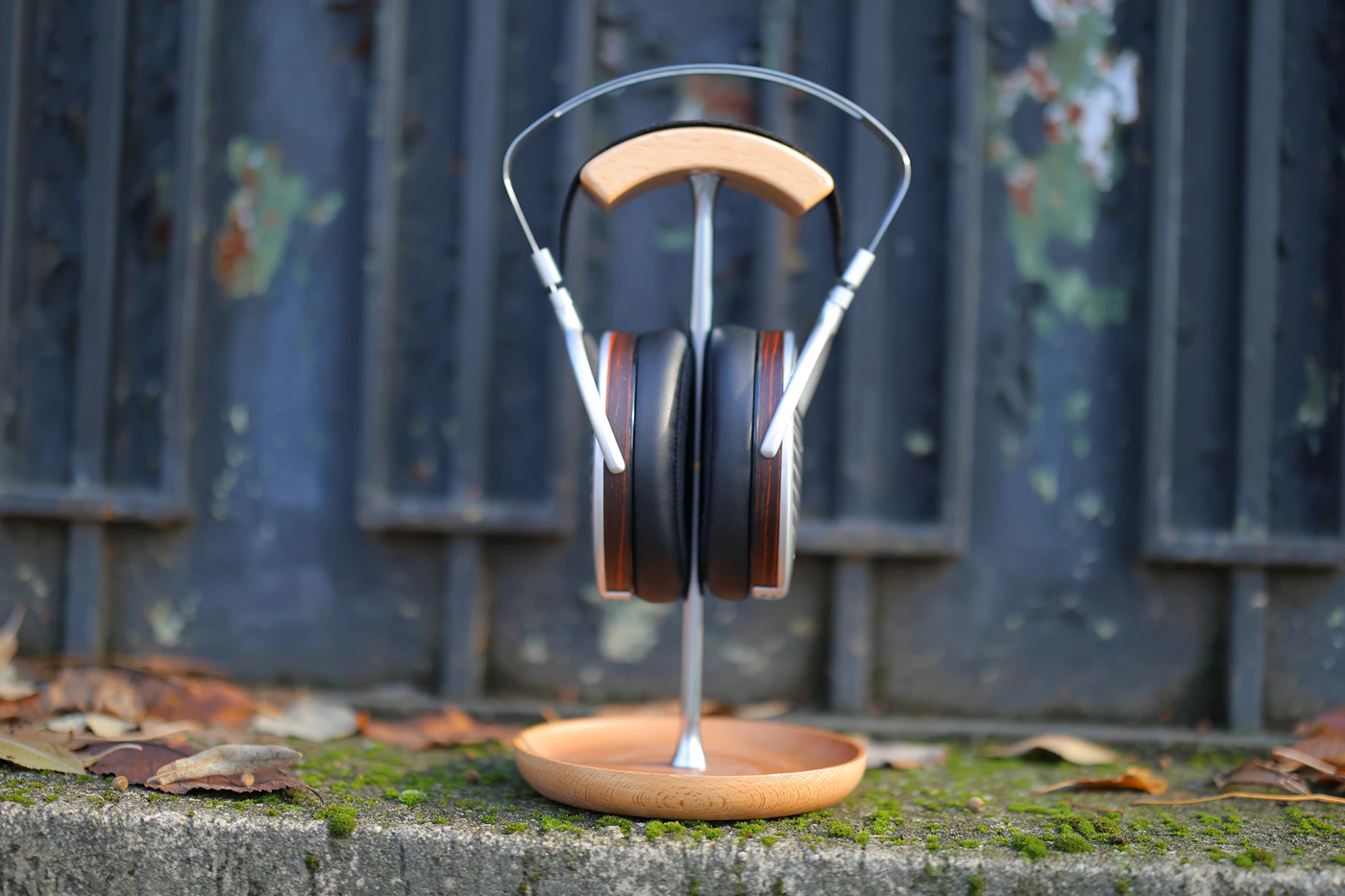
Having just the driver and less earcup also means a much higher transparency, and Susvara does not have much passive noise isolation, maybe between 1 and 3 dB, but even that is a bit of a stretch, considering that the magnets are acoustically stealthy to allow sonic waves to pass in between unhindered.
This also means that Susvara leaks the sound you’re hearing at maximum volume, but on the happy side, altough you would want this to be true for all flagships, Susvara is one of the few that really has no self noise. You can expect the headphones to never creak, never rumble or produce any kind of shuffling noise while you’re wearing them. I love this about Susvara as it makes using them fun and easy, and I wish more manufacturers designed flagships in particulat with this in mind.
Sound Quality
Pairings – To test how hard to drive Susvara is, I already knew I would need the best amplifiers I had, but when actually using them I realised just how much power those hungry boys can eat, so for the DAC I’ve been using FiiO S15, Aune S9C PRO, HIFIMAN Serenade, Dethonray Listening M1, and HIFIMAN EF600. For the Amplification, HIFIMAN Prelude shines bright and it is the best amplifier I currently have to power the Susvara, with more than plenty of power, but also control and resolution, yet they are drivable with a much lower price, including by Aune S17 PRO, Violectric HPA V340, Keces S3 as a DAC/AMP, iBasso D16 + iBasso PB5 as a combo, and even Sparkos Gemini is quite great. The more I experiment with multiple sources, the more I discover that the raw output power has nothing to do with the control, THD and actual sound you can get from an AMP, and for example, Sparkos Gemini, which is not very special will sound especially deep, controlled and reach 20 Hz nicely with HIFIMAN Susvara, while Aune S17 PRO cannot do the same, despite on paper being fully balanced and being more powerful.
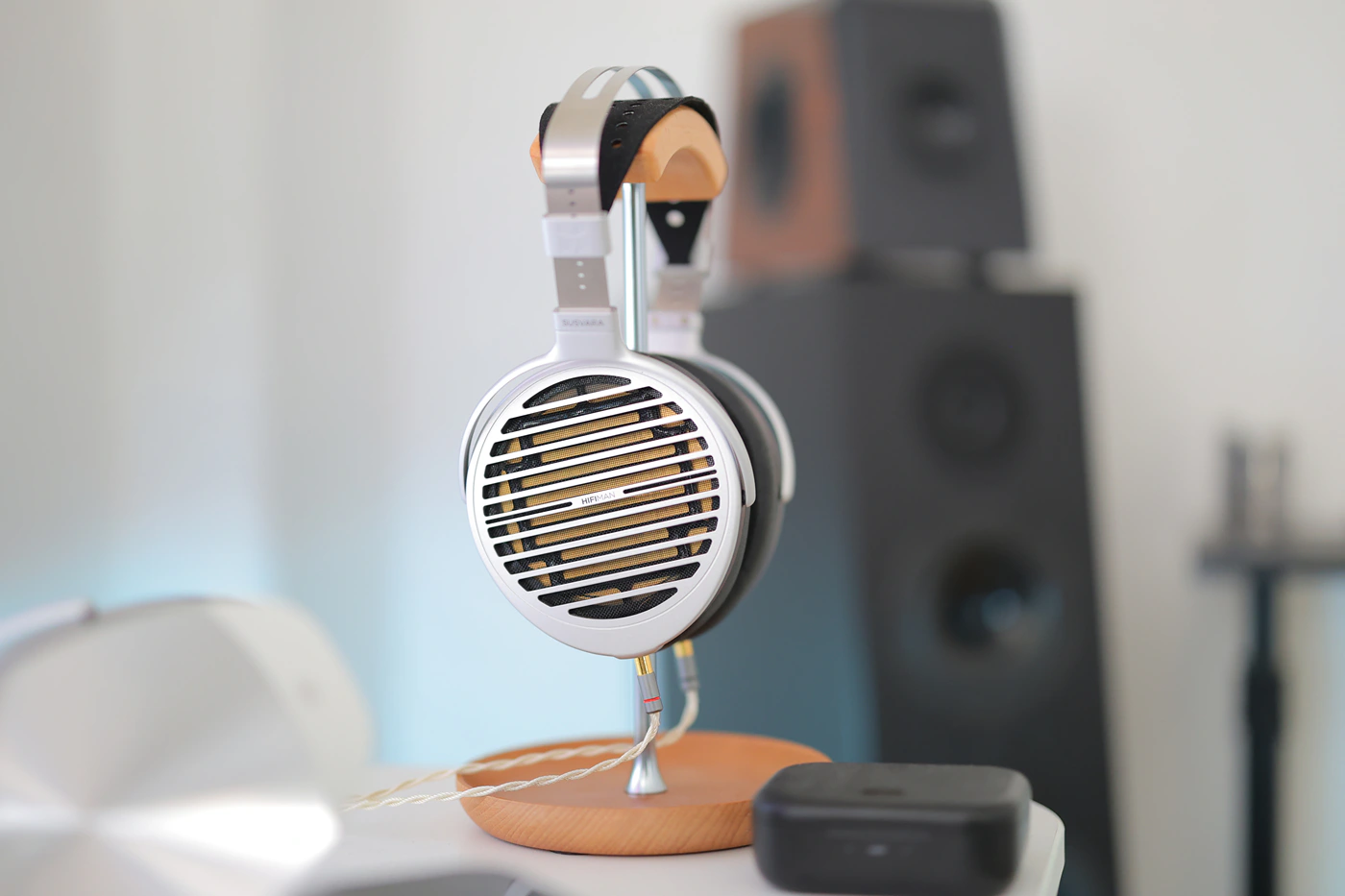
The problem with driving the Susvara stems from the very low SPL or sensitivity, so they eat raw power like it is its favorite sandwich, so you really need a strong AMP to squeeze the best out of them. I was quite happy with the iBasso flagship combo as long as I stayed below 110 dB, but to reach 120 – 125 dB for the SPL, the HIFIMAN Serenade + Prelude Combo does a much better job, and Aune S17 PRO is a really good option from a price / performance ratio, but so is using Dethonray Listening M1 directly or using even EF600, which is plenty powerful. The pair I have already had some burn-in applied, so I am not sure if Susvara requires any, but as with most headphones, you may adjust to the signature after the first 100 hours, and that can help better understand the sound. Replacing the default cable will not influence the sound too much with Susvara, especially as they have an incredibly low SPL, but I still would suggest replacing it for ergonomics. For this review I have used either the LavriCables Master Silver or Lavri Grand Silver V2, sometimes with a ddHiFi XLR44B to use Sparkos Gemini as one of the AMPs.
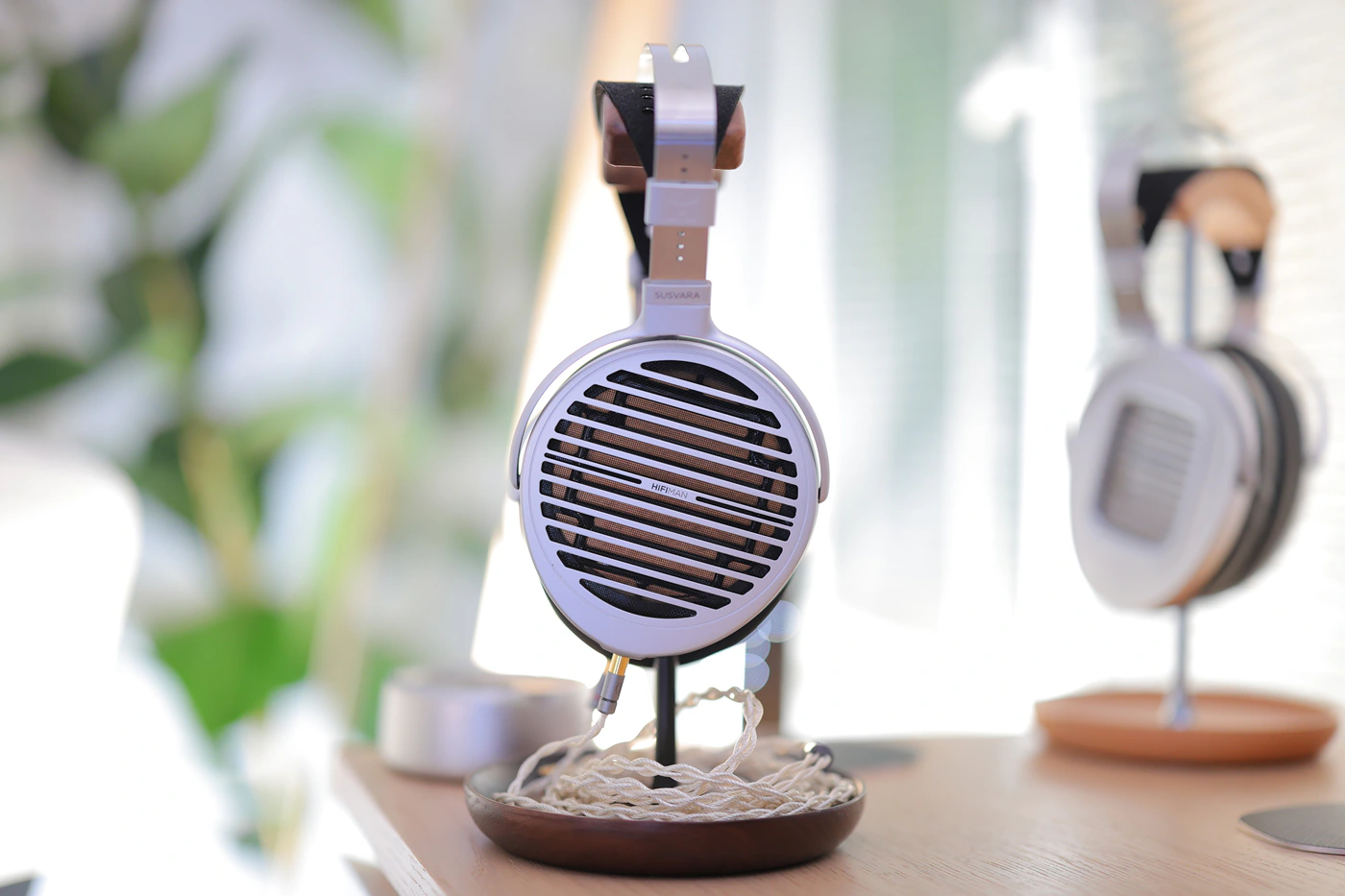
Overall Signature – HIFIMAN Susvara is the kind of headphone that you can write about, and at the same time all you’d express are your own feelings, they have a very natural sound, but a richness and vividness that puts everything else to the wall, the kind of resolution and soundstage that makes them a true end-game pair of headphones. Susvara in particular is far more sensitive to the source powering it, so your results will vary greatly if you’re not using adequate amplification and a DAC with enough resolution. The sound I am getting reaches 20 Hz, punches and kicks with authority, brings a colorful, rich, and vivid midrange at the center, but allows a 20 kHz perfect to-end extension, all within the widest, most holographic soundstage you will ever hear. Basically, Susvara is sonic bliss and musical perfection, it is pure transparency, and nothing I heard to date comes close to this level of life and vividness.
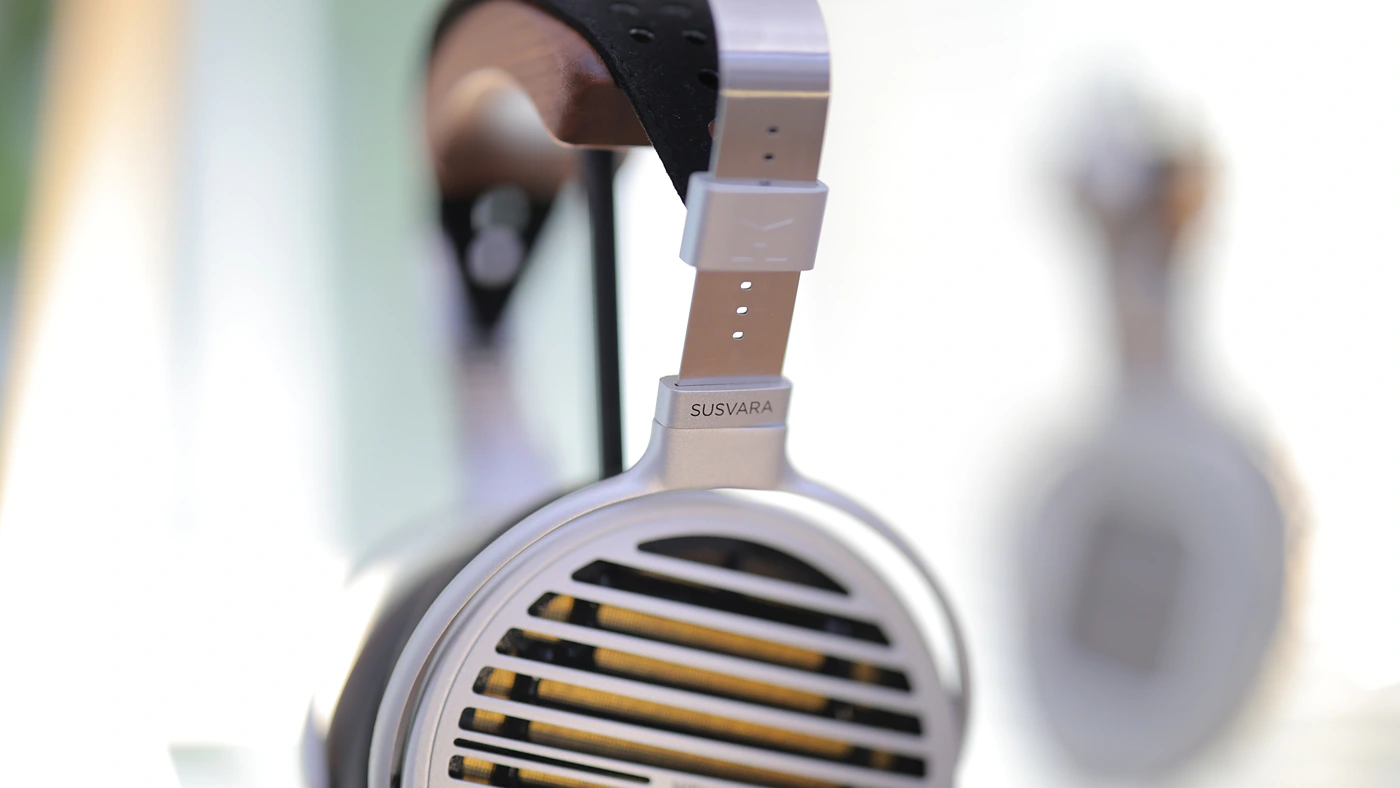
If the word balanced does not tell the whole story, Susvara is basically natural, it presents a natural amount of bass, a fairly present vocal, and an extended but fairly natural treble that has just the right amount of energy and life. Female voices are full of emotion, life and sound like the singer is literally in the same room as you, every single word makes sense, and Susvara is a full-on transparency filter experience.

Bass – We start from the bottom, and arguably the hardest part to get right in an open-back pair of headphones, where Susvara manages to create the deepest, most powerful, but also most natural bass that I heard so far from a planar magnetic headphone. It easily reaches 20 Hz, but also has full control down to the lowest point of the bass, shaking the earth with every single dubstep and rap track, but also having the warmth, musicality and depth to give instruments body and presence in jazz, classical and even rock tracks. The most interesting thing is that the amplifier will heavily influence how deep the bass can go with Susvara, and if there is any basic rule, if you’re not sure, just get a HIFIMAN DAC/AMP like the Serenade, Prelude, or EF600, they are all great for Susvara. You can get more fine tuning with Sparkos Gemini if it is powered by FiiO S15, the sound is incredibly powerful, without ever losing control, even up loud at 125 dB. In fact, once I got Susvara, one of the things I wanted to do the most was experience a live concert in my own room, pumping loud volumes, and experiencing the deepest bass ever produced by a pair of headphones.
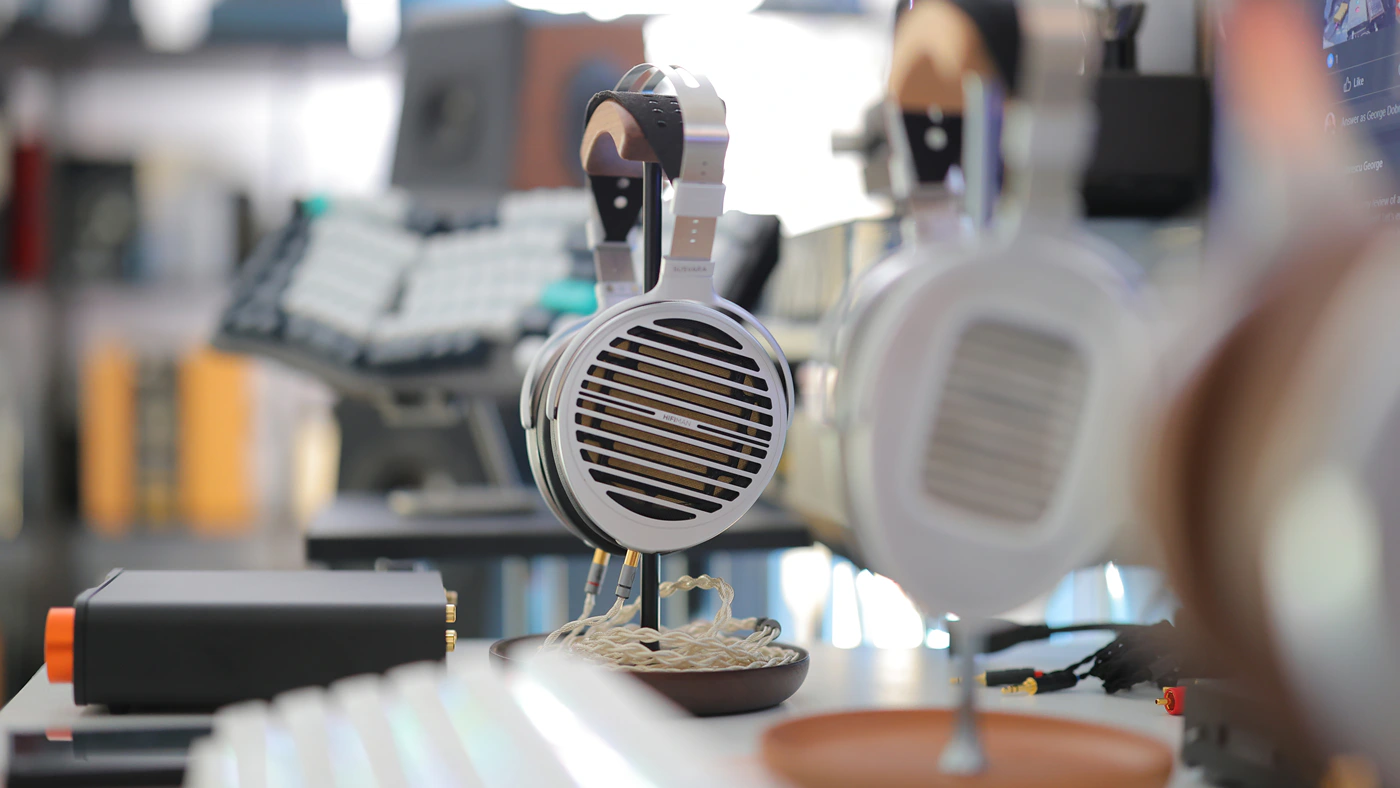
With all of this being said, Susvara is a rather neutral-ish sounding pair of headphones, so despite having the depth and extension, unless you’re pumping some dubstep, pop, or bass-heavy music, you will hear a pretty natural amount of bass, natural in decay, warm and pleasing. What is magical is how Susvara reveals the bass guitar every single time, even in rock and metal songs, without overdoing things, the tuning is literal perfection even if your listening palette is varied and has a good mix of both commercial and recent songs, and also older and less dynamically compressed pieces.
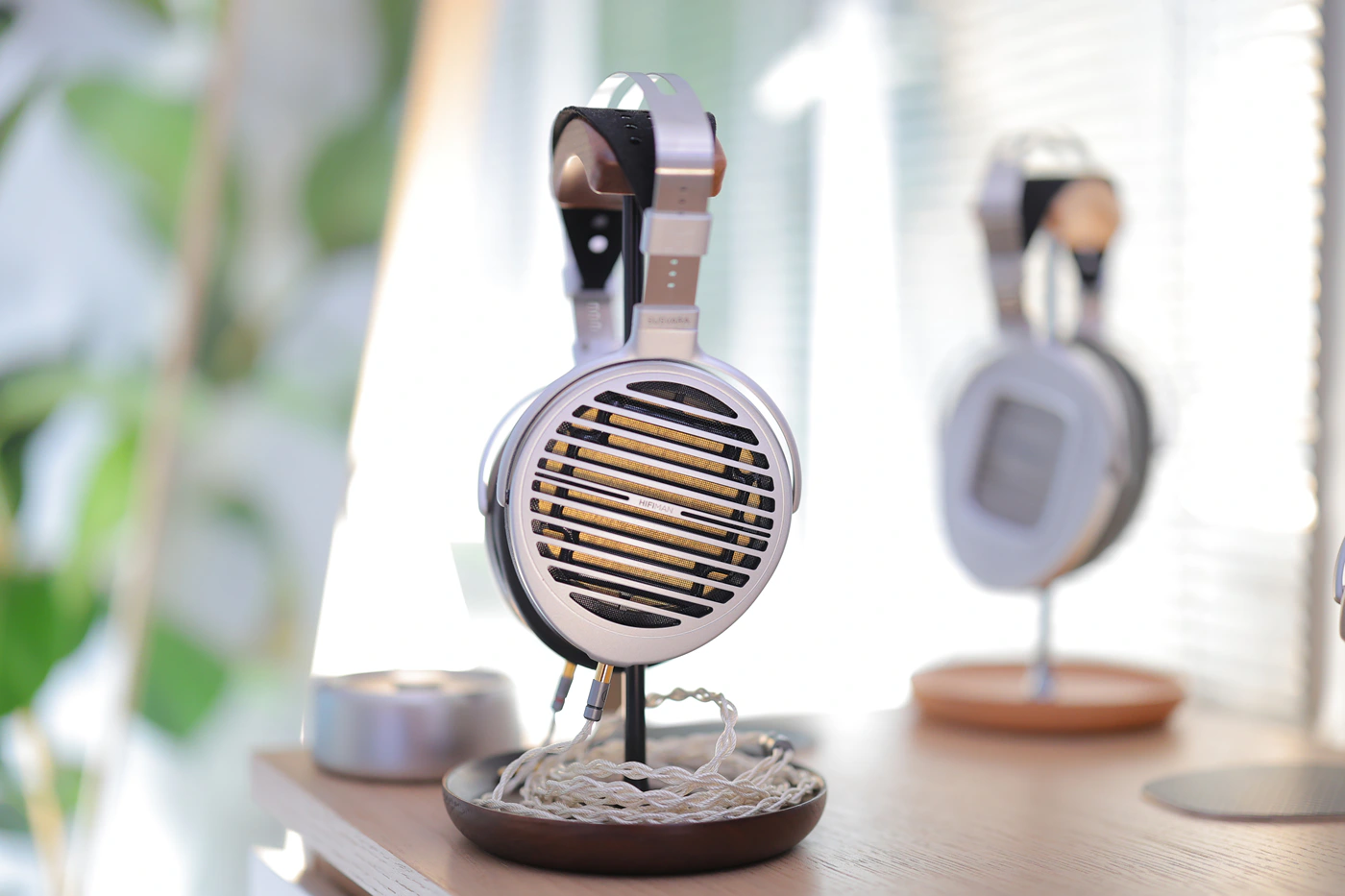
Midrange – In the mids is where all the magic happens with every pair of headphones, and Susvara in particular renders one of the most beautiful, most colorful mids in existence. Music comes through as colorful, vivid, detailed and in ultra-high resolution. Multiple layers of voices, multiple instruments playing at the same time are rendered perfectly separated, yet never surgically cut apart, always part of a larger musical blend of sound and music. Susvara is the one headphone that handles both male and female voices equally well, it has no favoritism for either, and in fact all music comes through as perfectly natural, balanced, with the most transparent presentation possible. The one thing you think to yourself as you hear the sound of Susvara is that there is no headphone, there’s you, the listener, and there’s the singer, it simply renders all textures, all gradients and instruments real.
This presentation works perfectly for my entire library and Susvara does an excellent job at playing rock, metal, pop, jazz, cabaret, dubstep and even classical. In fact, Susvara is the one pair of headphones I consider to be absolutely universal, they win at every single musical style, all are vivid, lively and as if it was being played in the same room as you. You’re put at the center of the track, and everyone plays gleefully around you with the highest of energy and dynamics.
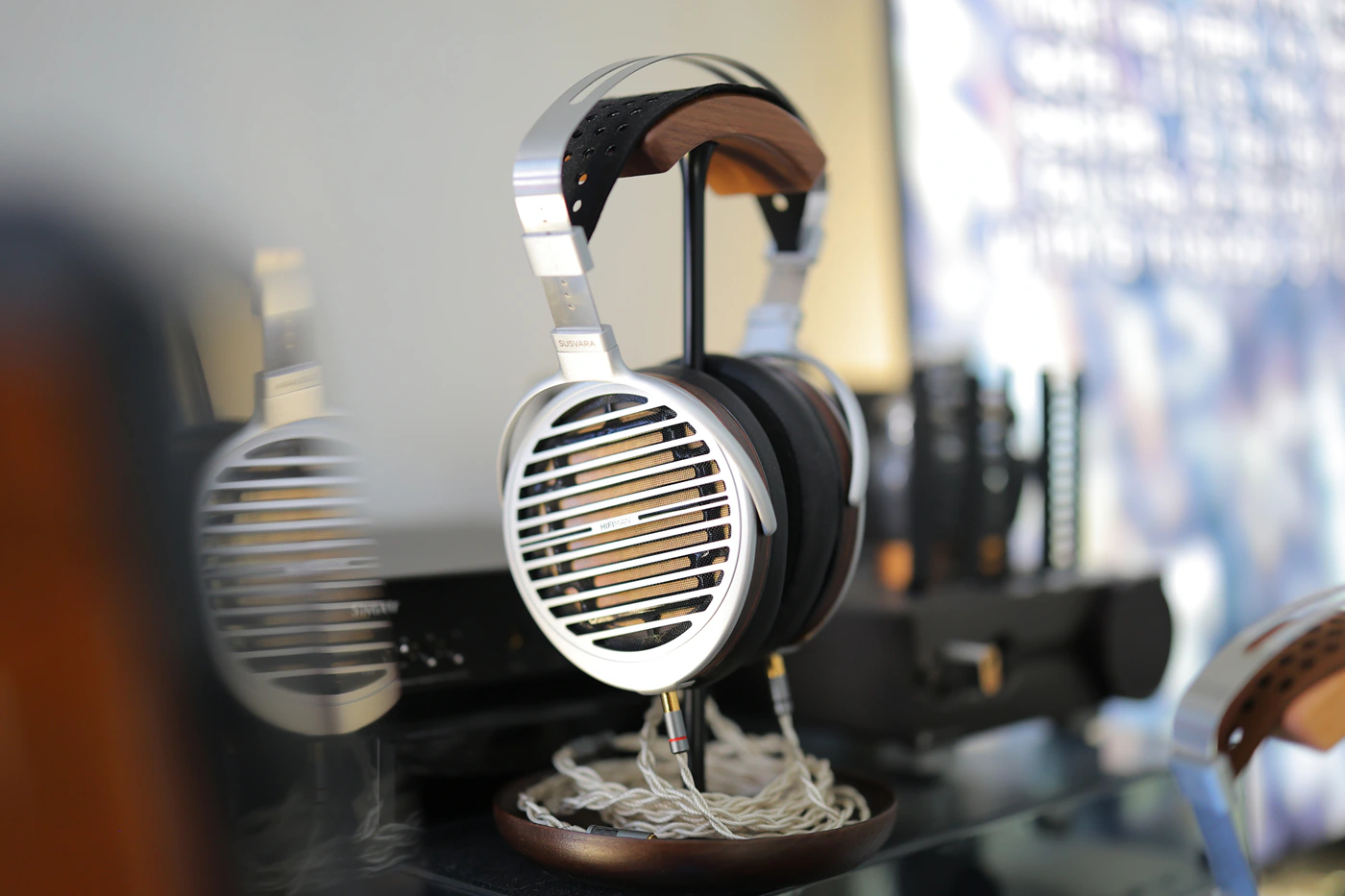
Treble – You can expect the extension to be endless with Susvara, but compared to most HIFIMAN Headphones, it is the least bright one, and their ultimate flagship presents the treble as a natural, extended, airy but non-fatiguing top end, with a resolution to match the price point. The one thing I keep noticing with Susvara is that when it is properly amplified, it renders even rare and unique instruments and effects the way they would sound in reality, even clinkets and for example hurdy gurdy has the right body, presence and texture, and this is just one of the instruments typically considered impossible to render properly at the transducer level. Stress torture with bands like Infant Annihilator show that Susvara actually sounds pretty smooth and musical, and the harsh / fatiguing edge of even ultra aggressive bands will be rendered mostly musical and fun. In general, treble and high-end takes a step behind the voices and lead instruments, being presented 5 to 10 dB below in volume and presence, which gives music a lot of space to happen, even at louder SPL levels, without fatigue or harshness.
To push your headphones to the limits, there are two bands that I love to hear, and those are SOAD or System Of A Dawn, and Infant Annihilator. Susvara handles both really well, and although it is able to render the sharpness, brightness and energy in the high-end of both, even in songs like Cigaro Susvara renders the treble ever so slightly smooth, enjoyable, present but never harsh in the texture, enjoyable and gives the whole song an energetic, bright and open sound without making it fatiguing, just raw, lively, vivid and energetic. You notice far more the weight of the bass guitar, the impact of the drums, and Serj Tankian’s emotional voice than you notice the cymbals, despite this song being part of SOAD’s brighter mixing and mastering era.
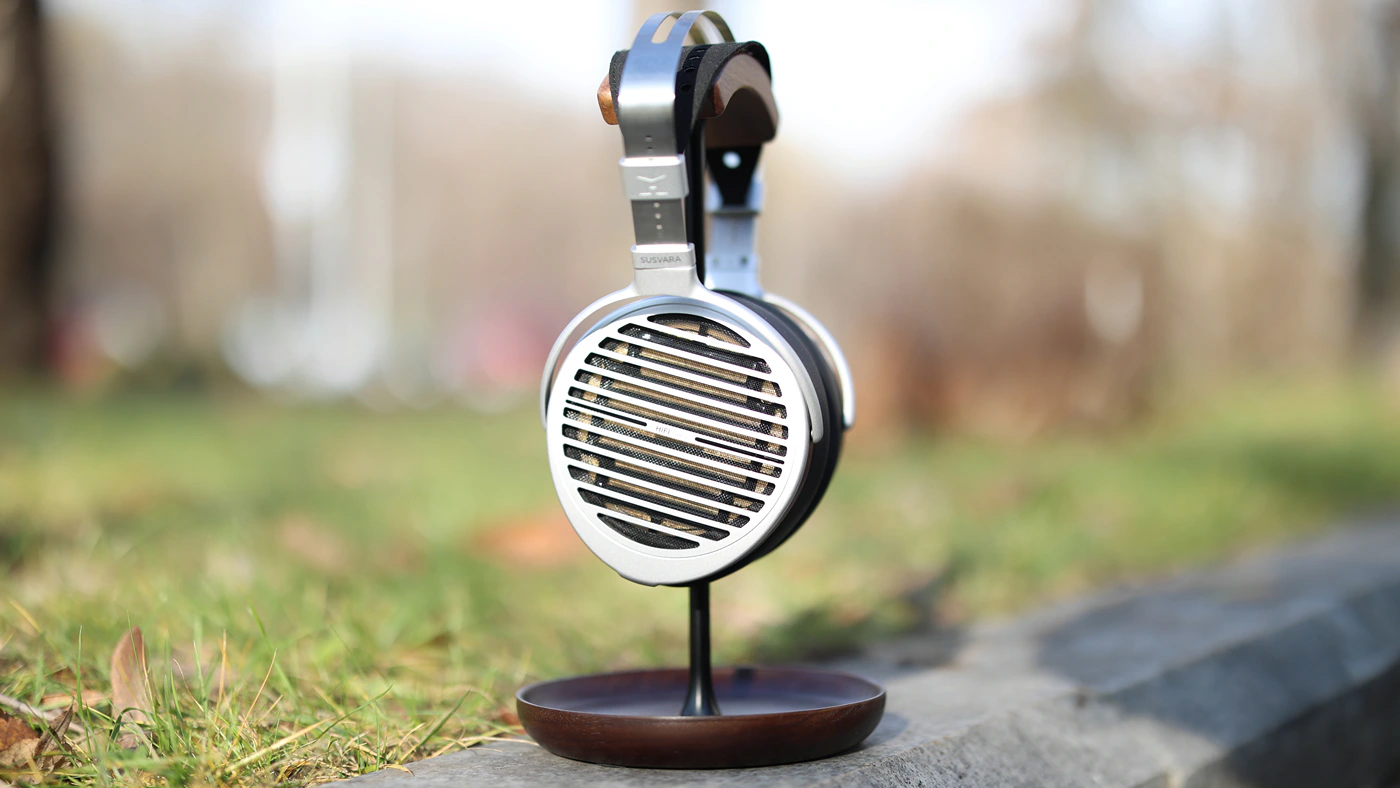
PRaT / Textures – Susvara is the first headphone I can confidently hear all natural textures with, including wood, metal and even unique instruments in folk music, as Susvara can reliably reproduce the right amount of texturization. This is thanks to an extremely quick impulse response of the driver, while the psychoacoustics of the headphones create a long enough decay for instruments to have body and presence, Susvara has the right combination of a fast driver, and the right amount of damping in the earpads, earcup to actually have the micro echo that creates the perfect, sublime textures. Even large orchestras that have been recorded in a large theater put you right in the middle of the theater, a small and demure guitar playing in the corner of a jazz room, everything sounds as if you are right there. If you wonder if this has any kind of disadvantage, well, if you have a library composed of low resolution files, especially compressed, Susvara makes it incredibly obvious. This includes both dynamic compression and data rate compression, Susvara can reveal everything about your song, for example, even with classical music, a missing background bit of information is not typically audible with most headphones, but Susvara makes it very obvious.
The best band, by far, to test the textures of each headphone is Mindless Self Indulgence, because they stretch the limits of textures both for harshness but also for weight of each musical instrument, and most headphones fail to render the kind of body, presence and tactile feeling that susvara gives to songs like Mastermind, where Susvara creates a really impactful, strong and forward texture for the whole song.

Dynamics – Susvara has the widest, most accurate dynamic range of all the headphones I have enjoyed to date. They reveal dynamic compression as well as they reveal a high dynamic range, Susvara paints the complete picture of each song, rock and metal sounds raw, loud, and like a wall of sound, while a large orchestra can quickly go from quiet to deafening. The sound is also incredibly punchy and has a strong kick, so it sounds dynamic and colorful, vivid and revealing.
To test the dynamic limits of each pair of headphones I typically use a complex list of songs, but Haggard will quickly show the true colors of a headphone, and their Eppur Si Muove and Tales of Ithiria are both excellent for pushing things to the limit. Listening to the Of A Might Divine song, Susvara is just so effortlessly rendering all the mixed instruments, including the crisp and emotional pianos and violins, but quickly passing the focus to the strong and coarse voice of the lead singer of Haggard. Even the choir that enters the song gives it backbone and Susvara brings all those elements to the front whale allowing for enough space to fill in the background with the dire and serious mix of stringed and blow instruments. Overall, it just puts you at the center, and everything just plays around you so beautifully and in a real matter, Susvara is simply transparent and more of a teleportation headphone in their ability to transport you there.
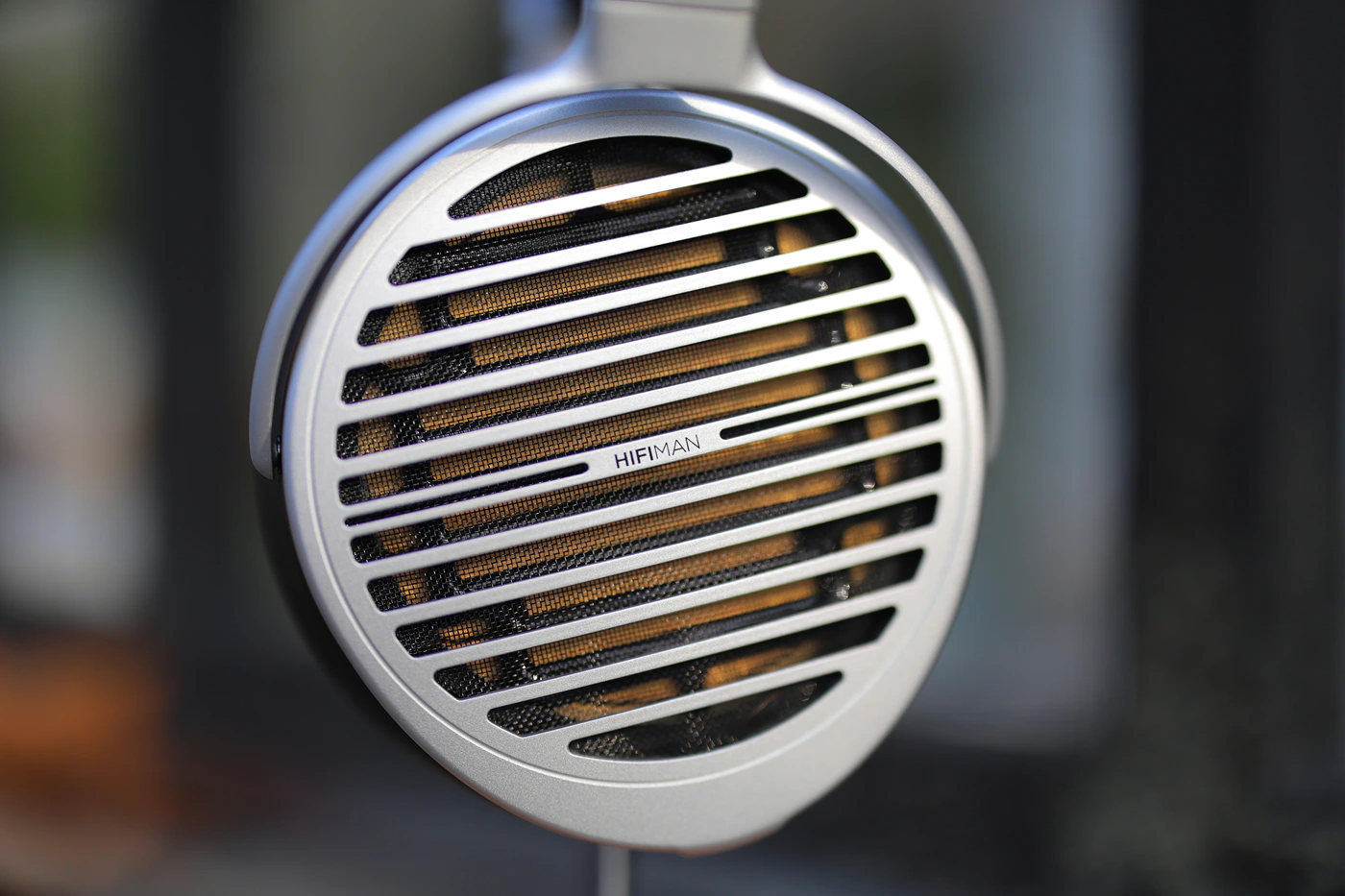
Loudness Saturation Gradient – If you like to listen loud Susvara will serve you really well, but the same can be said even if you like to listen at quiet volumes. In fact, it is one of the headphones with the least variation in the loudness saturation gradient, all volumes sound the same, same resolution, frequency response, and this is desirable from a high-end flagship headphone. This being said, Susvara is so incredibly hard to drive and master that some amplifiers may struggle to give them the right control and keep their cool at maximum volume, so that can induce the feeling that the headphone struggles at high volumes. Ironically, I found Susvara to have among the lowest THD levels at more than 120 dB in SPL, but still have the same satisfying sound at very low volumes, around 60 dB, but most amplifiers play the best in between 75 dB and 95 dB, while an amplifier that has proper quality by itself like HIFIMAN Prelude will control Susvara across all volume levels. In fact, both Prelude and Sparkos Gemini can control Susvara at max volume and at low volumes, and so you can enjoy a power-up Susvara both with a high-end system, or if you read and explore the more affordable options, while staying on a budget.
Soundstage – The soundstage of the Susvara is the most natural I’ve heard to date, they simply project music equally well in the horizontal, vertical and depth dimensions, to create the feeling that music is happening all around you. It feels like even if there may be a pair of headphones that can go wider, it loses the essence of portraying music, while Susvara simply paints every single instrument in the place it should obviously be at. Layering is excellent, but Susvara blends instruments in the most natural way possible, guitars are cohesively paired with other guitars, voices and other instruments, not within the same layers, but each layer blends to create the final masterpiece.
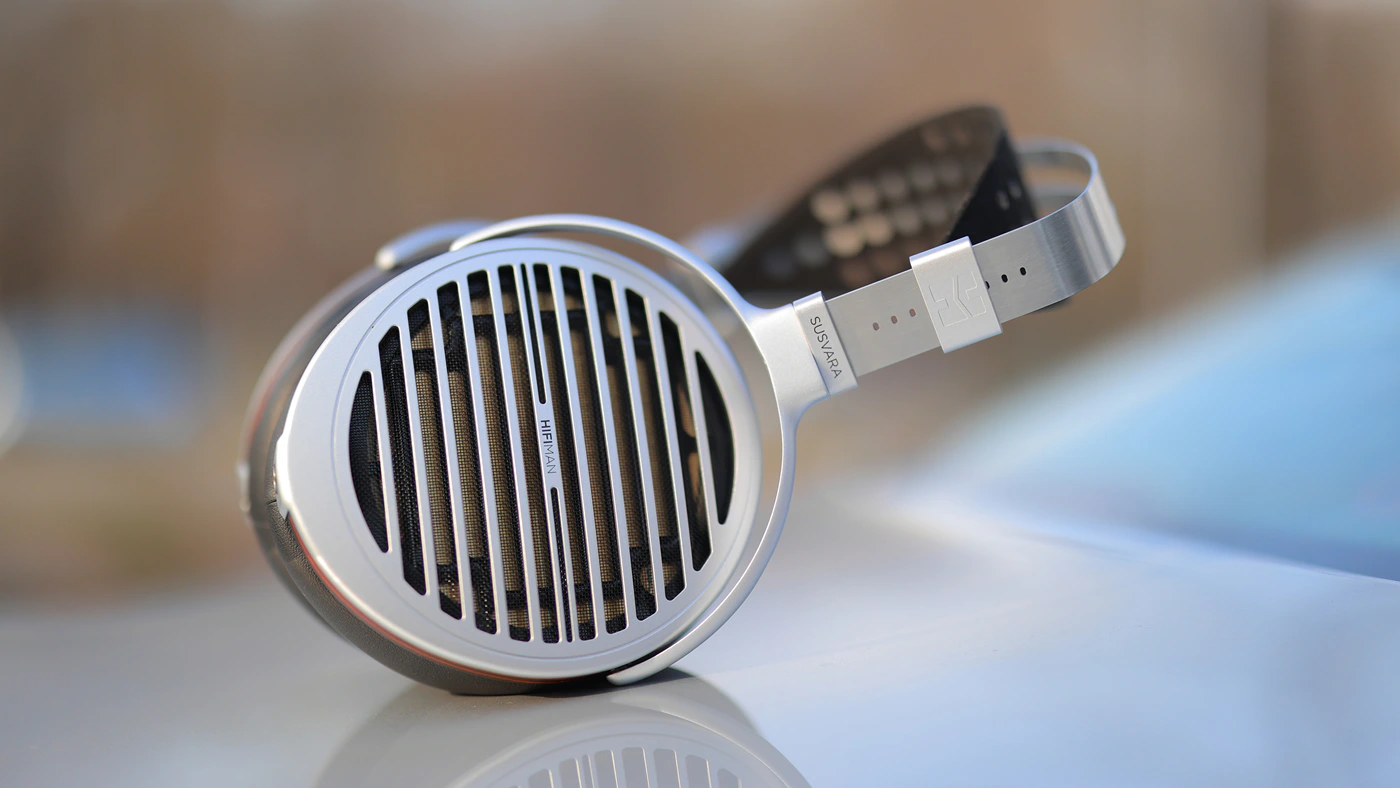
A good song to explore for this is Wintersun – StarChild from their Wintersun 2.0 remaster, as this band basically kicked me in the audiophile world, thanks to how complex their work is. HIFIMAN created basically the perfect pair of headphones to enjoy and study the complex layering and rich, bountiful instrumentals of a band like Winterun, as Susvara manages to keep each guitar layer separated, to render the fine, bright but never fatiguing drum and cymbal patters on the upper edge of the background, while voices are presented slightly more forward, ever so slightly in front of the guitars. What sets Susvara apart from all the headphones I’ve heard is their ability to give those guitars body, to give the background stringed instruments a vivid, rich and emotional, lifelike tonality, and to make everything simply real.
Comparisons
HIFIMAN Susvara vs HIFIMAN HE1000 Unveiled – (6000 USD vs 2699 USD) – HIFIMAN versus HIFIMAN you can see how the Flagship Susvara comes with a different shape and size, smaller and more compact earcups, feeling a bit lighter, although both headphones have more than enough space for my ears inside. Susvara feels lighter on my head, the default cables have more or less the same quality, but the drive factor is vastly different. You can get away with driving the HE1000 Unveiled and getting their full performance out of fairly affordable and much lower powered sources, including DAPs like iBasso DX320 MAX Ti, Lotto PAW GT2, and basically most DAPs that are in the high-end range and have lots of power. Susvara needs a nuclear reactor, beefy amplifier, although I bring once again to your attention that raw power on paper is not exactly the key and Sparkos Gemini has better control and driving power than Aune S17 PRO, although Gemini has a max power of 2 Watts, and S17 PRO has a max output of 7.5 watts.
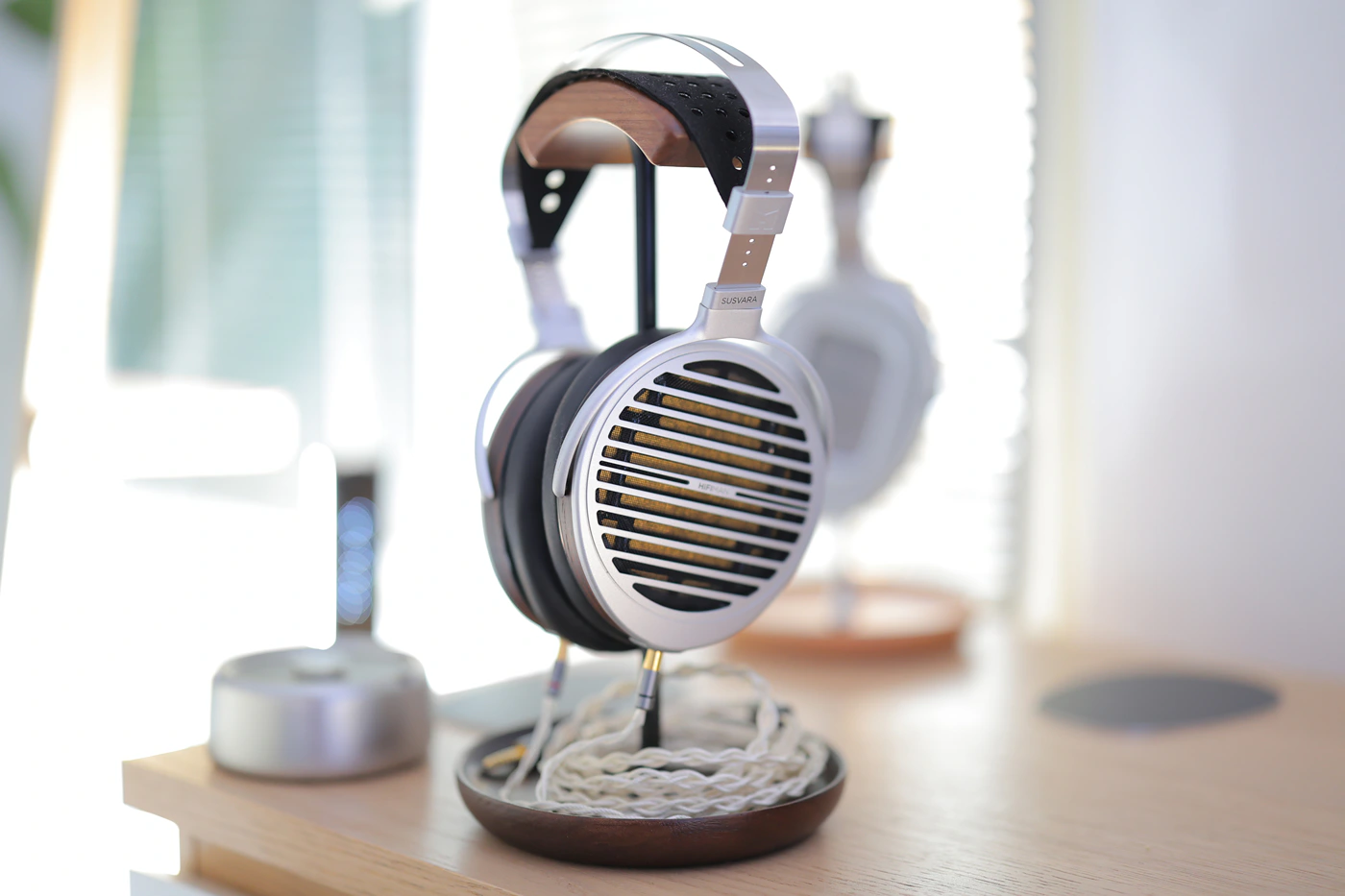
Sonically, we will also see the Susvara Unveiled later on, but for now HE1000 Unveiled is a more forward, more pumped up headphone with a more direct sound, they bring detail more in-your-face, while Susvara is more laid-back. HE1000 Unveiled sounds and feels quite bright while Susvara feels more balanced, more natural, has a richer midrange, and a vastly higher level of resolution, detail revealing ability and clarity. He1000 Unveiled is already impressive, but Susvara takes it to a whole new level, the transparency, punch and resolution of the Susvara is just much better. You hear how Susvara reaches the 20 Hz point much better, how they produce a much richer midrange, and how the sound is generally warmer, more pleasing, without sounding colored, it actually sounds more natural and how you’d expect music to resonate and sound like in reality when played live right in front of you. Susvara reproduces the specific textures of all acoustic instruments more faithfully, which is incredibly pleasing and revealing to hear, while HE1000 Unveiled has more of a tuning of its own. In each price range, they are incredible, and I won’t dethorne HE1000 Unveiled, it is still an excellent pair of headphones, but the HIFIMAN jewel is simply on a whole nother level.

HIFIMAN Susvara vs T+A Solitaire P-SE – (6000 USD vs 3900 USD) – We start with the build, where Solitaire P-SE is a slihglty lighter headphone, made mostly of polycarbonate / plastic, while Susvara has quite a bit more metal in the build. The default cables of the Solitaire P-SE are a bit better, and that’s excellent, because you cannot replace them with any aftermarket options. The overall comfort of the Susvara sums up to be a bit better, thanks to deeper, more dense ear pads that feel more natural in contact with my ears. Solitaire P-SE and Susvara have almost the same level of passive noise isolation, which is almost zero, but Solitaire P-SE is slightly more sensitive to the room acoustics than Susvara. Susvara is considerably harder to drive and needs a good AMP / DAC, while Solitaire P-SE can be driven fairly well out of most sources, including beefy DAPs.
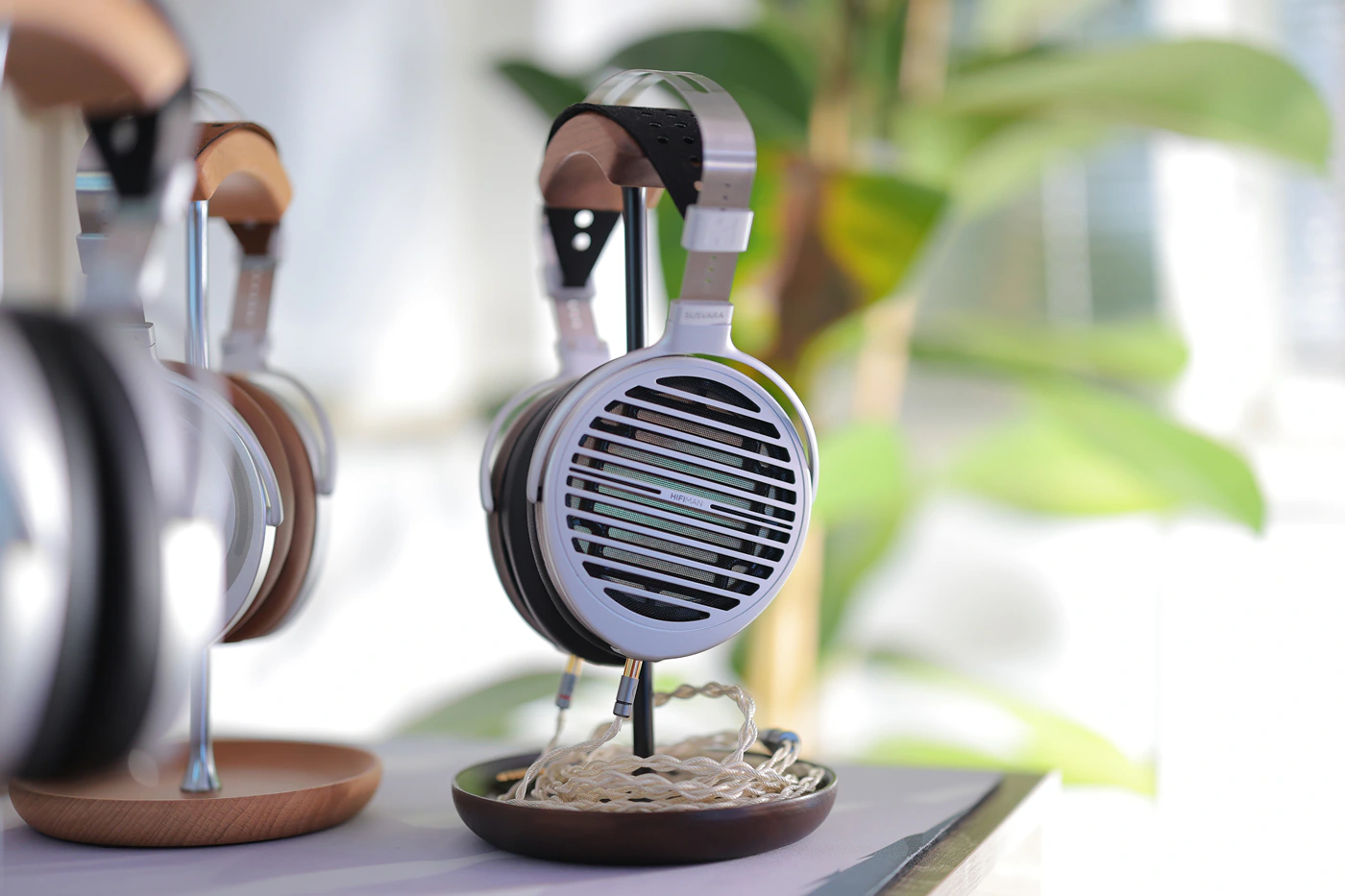
Sonically, it feels like Solitaire P-SE had one purpose as a headphone, to sound as wide, holographic and airy as possible, but in the process it sacrifices some bass depth and kick / punch, while having an excellent dynamic range. Susvara sounds considerably warmer, more natural, and has a bigger kick / punch in the sound. It feels like Susvara is a much more complete pair of headphones, and the most ironic part is that once you allow both to settle in and once you mentally burn in both, Susvara actually sounds wider, more holographic and has a richer midrange with a better resolution. With Susvara, the final setup is pricier though, as it does need a good DAC and AMP, and a better cable for ergonomics, while T+A Solitaire P-SE is easier to master and squeeze the most out of. This being said, Susvara is an end-game pair of headphones, once you get them, there’s very little way to upgrade things anymore, while with the Solitaire P-SE, you can still yearn for the solitaire P, Susvara and other end-game headphones.
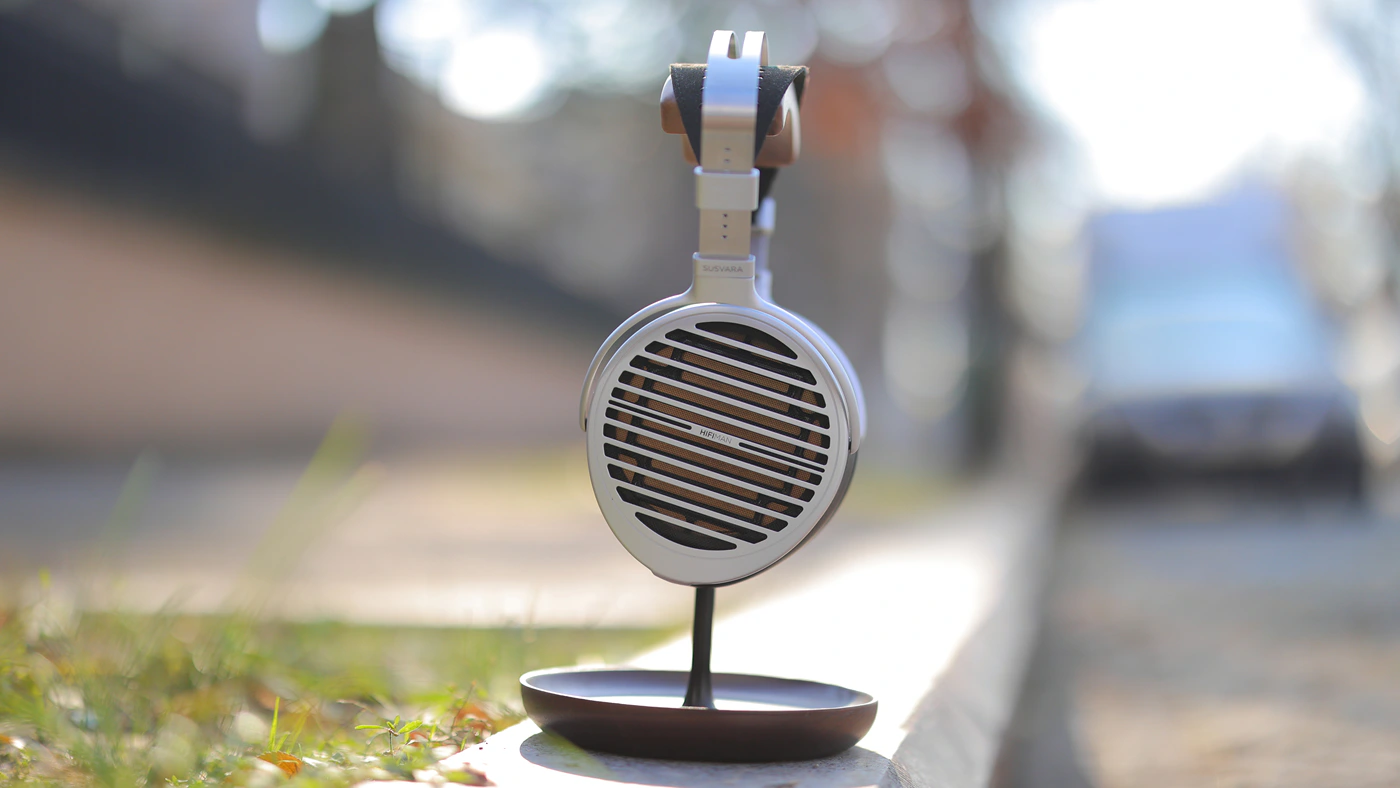
HIFIMAN Susvara vs Dan Clark Audio Expanse – (6000 USD vs 3999 USD) – Expanse starts stronger in the build, as it is more compact, can be folded for easy transport and storage, and despite also being open-back leaking much less and isolating a bit more from the outside noise. Dan Clark uses a less common connector for the cable, so if you don’t get the Expanse with a balanced cable, it is harder to make an aftermarket one, while for Susvara, you can find really nice cables even starting with 200 USD. Expanse is easier to drive than Susvara, and quite a bit easier, so they’re usable with some portable sources too, which makes sense as they are made for a bit more portability.
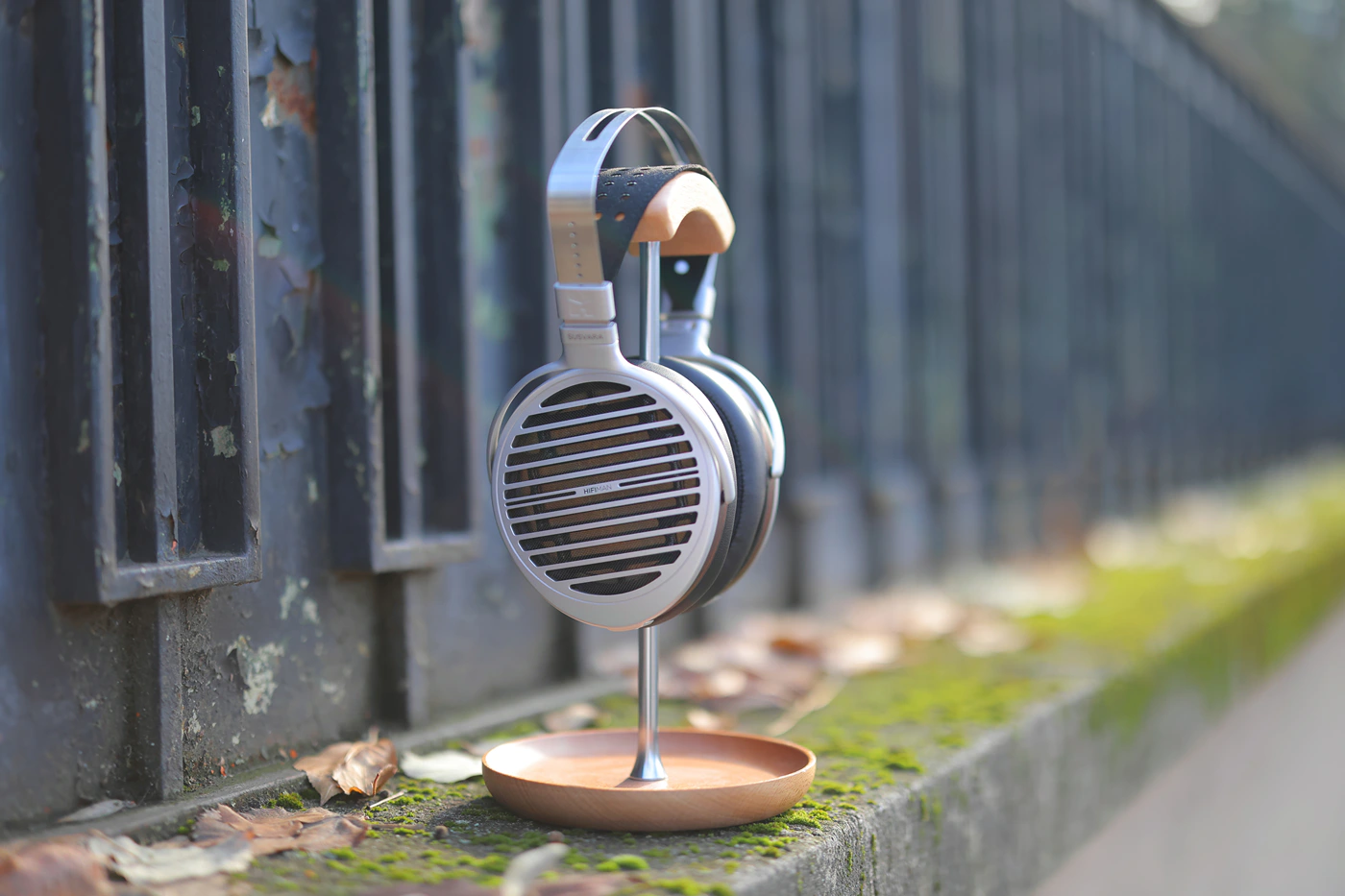
Sonically, Expanse is more V-Shaped than Susvara, although compared to most Dan Clark headphones, they could be considered vocal and balanced. Susvara is a bit warmer, especially in the lower midrange, sounds richer in the midrange, and has a slightly less bright treble, despite having an equally good extension. The actual maximum resolution of Susvara is higher, Expanse presents music in a tight and revealing way, but Susvara expands the soundstage in both width and depth, creating a less separated layering, but a richer amount of information. The texture and reverberation of each instrument is more true-to-life as presented by Susvara, which gives music a really transparent feeling. With the Expanse, you hear what the signature and tuning of the Expanse is, you can definitely tell what they are doing to the sound, while with Susvara, they’re more of an open window to your music, they have much less of a signature and more of a technical ability to disappear and present music as it is. This also means that most recordings have a similar tuning across songs with the Expanse, while Susvara can vary greatly, allowing each track to show its ups and downs, and have a more honest approach to what actually is within the song.
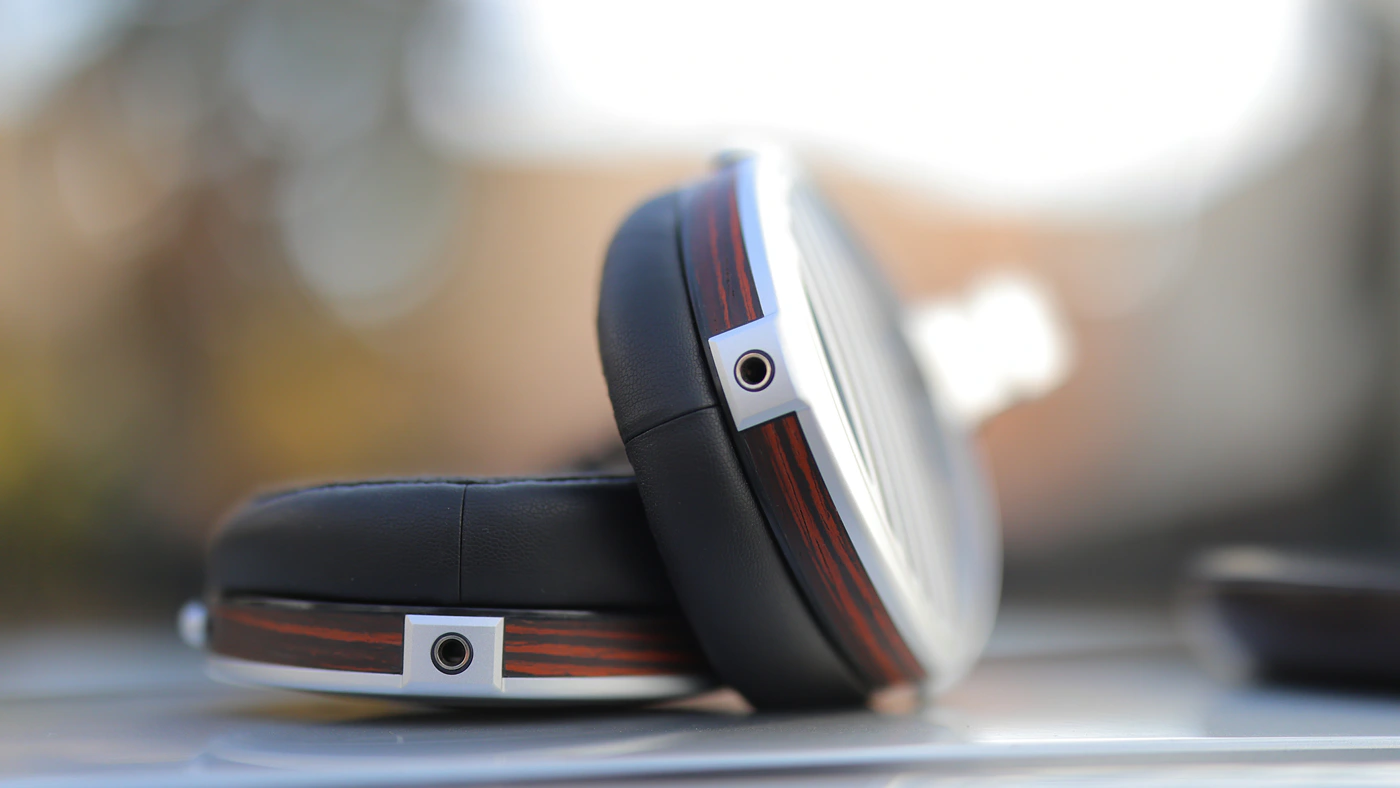
HIFIMAN Susvara vs Audeze LCD-5 – (6000 USD vs 4500 USD) – Starting with the shape and build, Susvara is a much lighter pair of headphones with a much better comfort, although the leak far more and the passive noise isolation is much lower. LCD-5 is not quite as transparent in the leakage / isolation, so that means Susfara will depend a bit more on the room acoustics and also that LCD-5 will be far heavier and less comfortable to use for long periods of time. The default cables of both headphones need a replacement and upgrade as soon as you purchase them, although susvara uses a very common 3.5mm connector at the headphone side, which is easy to replace and upgrade, while the miniXLR cables of LCD-5 are not just harder to find and source, and you’re far less likely to already have one of those cables, but the first batch had the connectors so tight that you could pull the entire connector out of the headphone, judging from the comments online from customers.
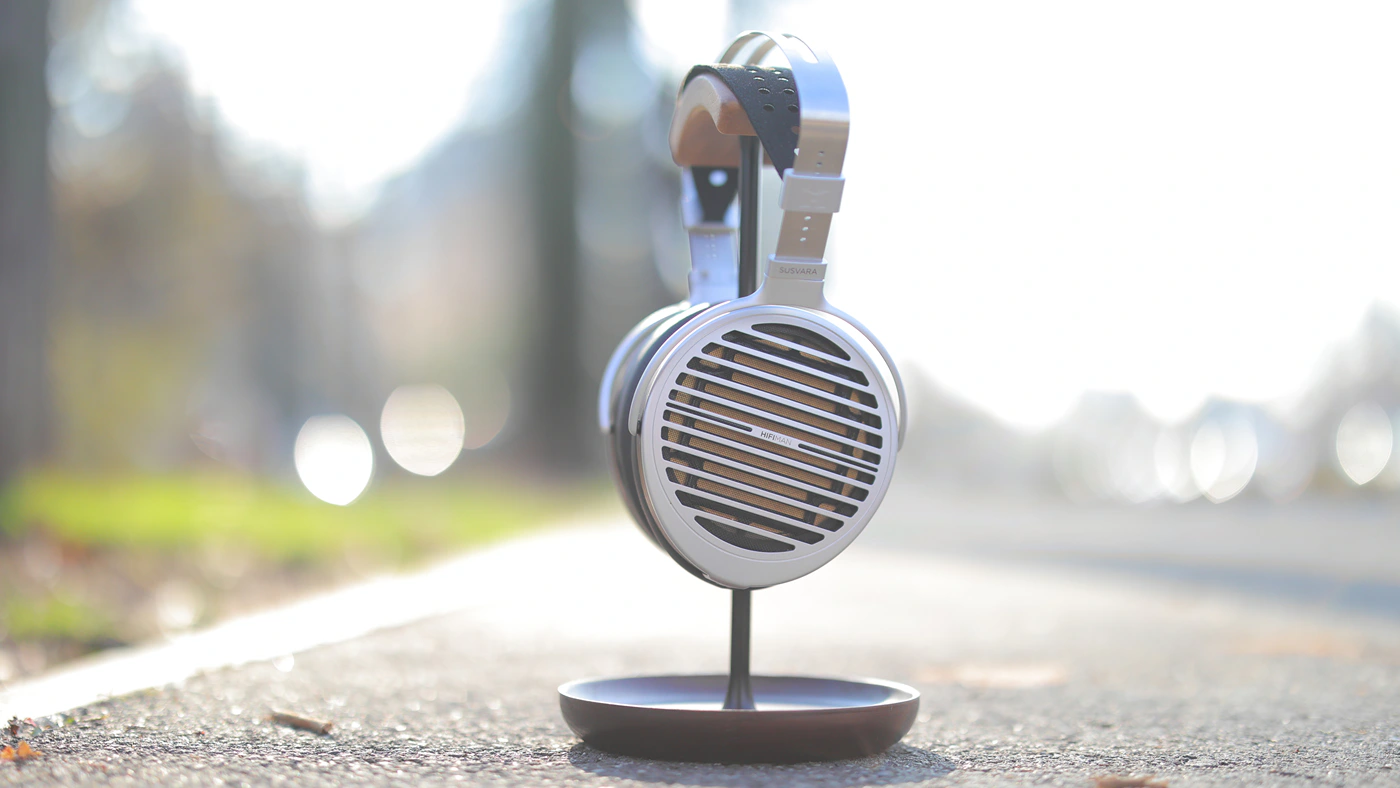
Sonically, the two headphones are so close in resolution and clarity, yet so distant in the tuning, that they don’t even really play in the same league. LCD-5 starts with a tighter, initially deeper bass, a tighter overall sound, but a smaller soundstage, with more focus on the instrument separation and layering. Susvara sounds a bit brighter, the bass is more natural, fuller and a bit warmer, a bit slower too, with a longer decay, but the actual perceived resolution in the midrange is much higher on the susvara, which although is not quite as tight and as fast in the impulse response, can create a far larger, wider soundstage which reveals more information in between the instruments, it gives more sense to the soundstage and creates a more natural sound. Overall, LCD-5 is a professional, detailed sounding pair of headphones, but Susvara is a more natural, wider, more holographic and more musical sounding pair of headphones, it is a bit of an upgrade from LCD-5, unless you need the ultimate tightness.
Value and Conclusion
While the price tag is incredibly high, even by audiophile standards, HIFIMAN Susvara delivers on everything it promises to deliver, it is that final headphone, the end of the upgrade cycle, and nothing so far could be an upgrade to it, so it is currently the headphone I can recommend to someone who is looking to purchase the ultimate pair of headphones. Keeping this in mind, Sennheiser priced their HE-1 system at around 50.000 USD, so the 6000 USD price tag of the Susvara, which actually sounds better than HE-1 makes it look like a great deal for a flagship, even if you put in 4000 USD or so towards a good DAC/AMP.
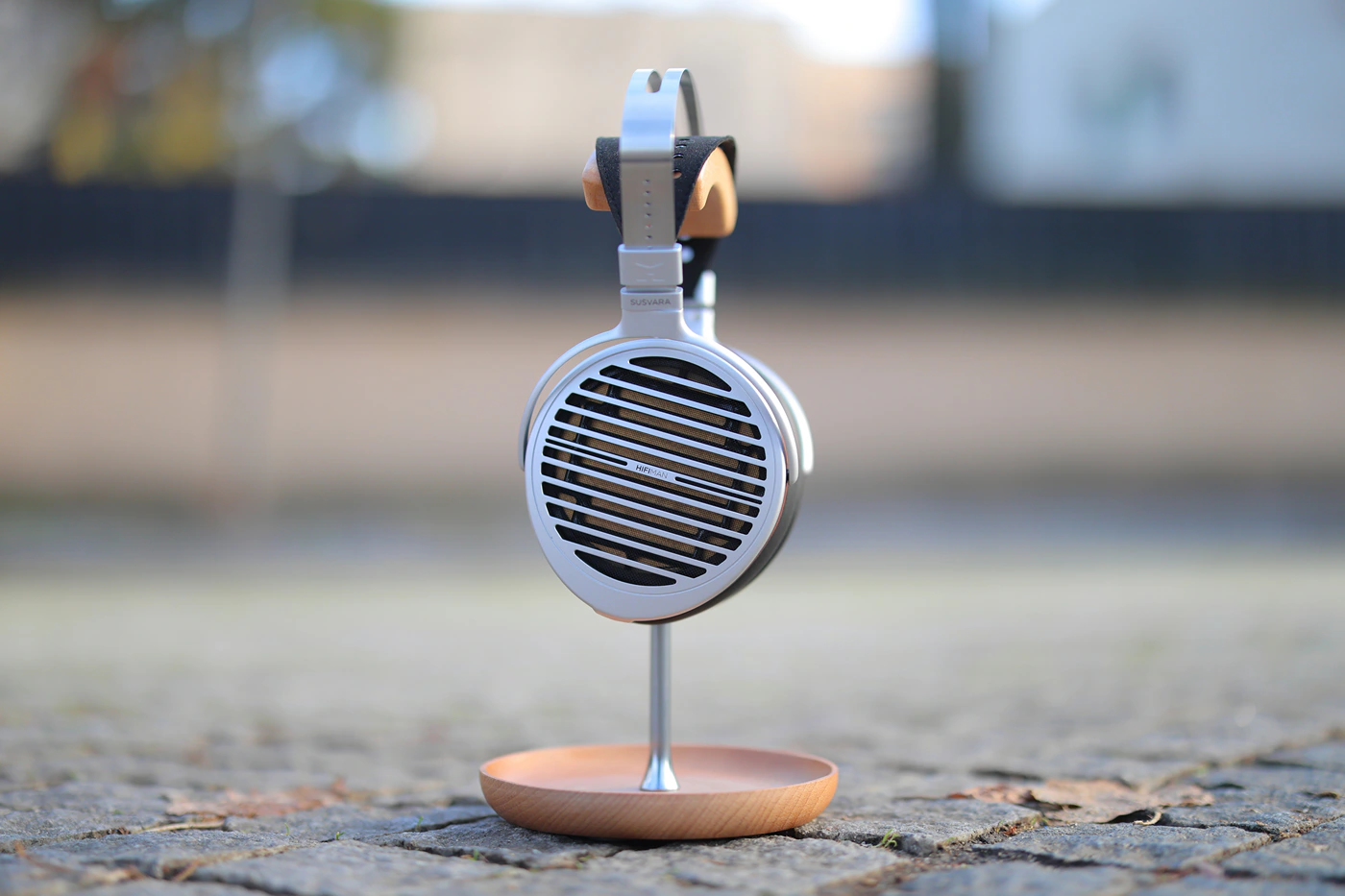
Award – This is the best sounding pair of headphones, and it made no sacrifice in comfort, design, or reliability, so today we award Susvara the Audiophile-Heaven Hall Of Fame award, as the ultimate pair of headphones designed from all that we’ve reviewed so far.
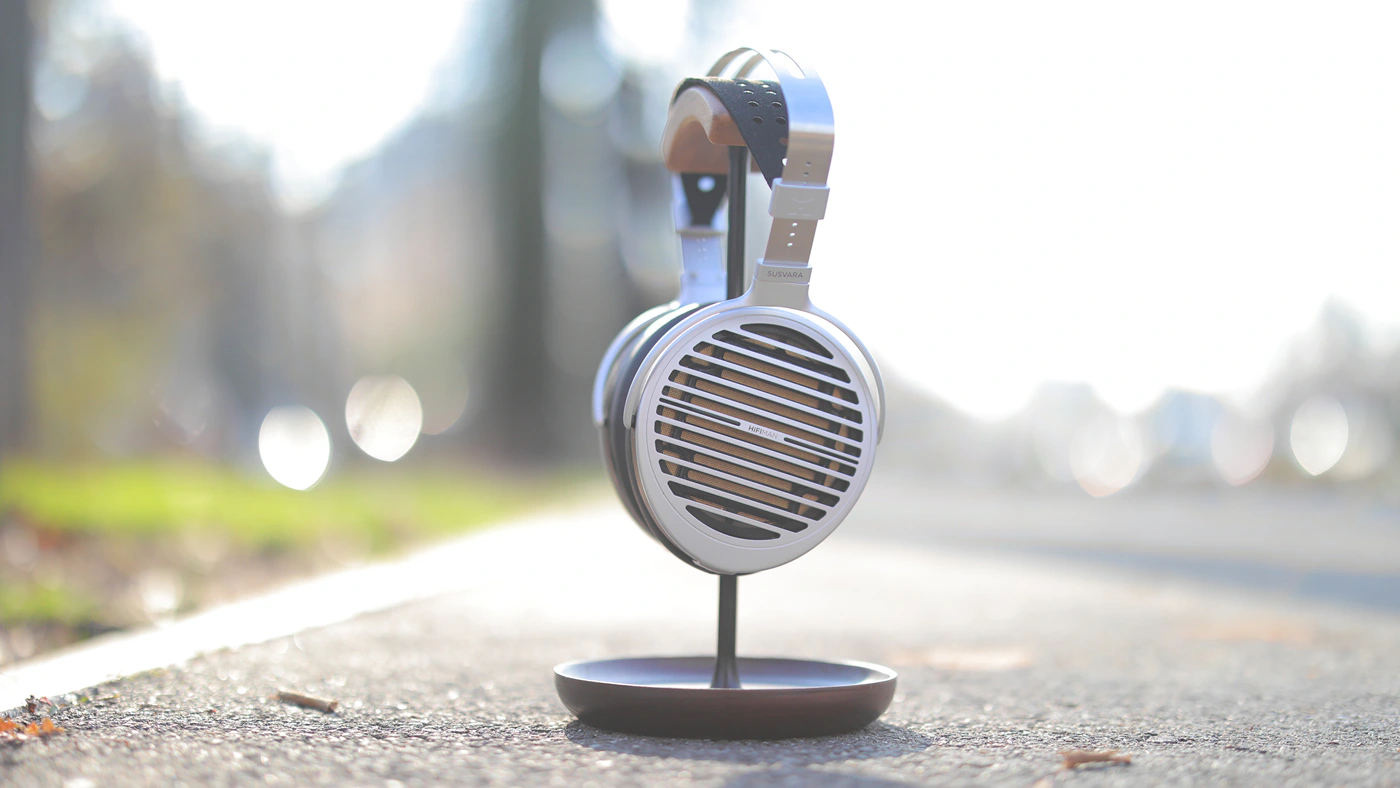
At the end of the day, Susvara is a pure reference pair of headphones, it sounds beautiful, it needs a lot of power and it is designed for those who are ready to commit to the last piece of the upgrade cycle, so if you want to hear the best the world currently has to offer, I highly suggest that you give it a go or add it to your shopping list, this is the one pair of headphones that I trust will not disappoint you.
PROs
- Solid Build Quality
- Excellent Comfort
- Incredible sound quality and signature, so much so that mere words cannot express the level of “impressed” you get once you hear the Susvara
- It does deliver on the price and outclasses everything else it is fighting against
- Beautiful design
- Bass is audible even in rock and metal without overdoing it and whilst keeping it under control
- Richest, most vivid presentation you will ever hear in the midrange
- A bright, energetic, yet not harsh nor fatiguing treble that gives life and color to all tracks it is playing
- Holographic, wide and excellent soundstage
Cons
- Those default cables need an upgrade
- Hardest to drive pair of headphones in the whole world, requires good matching with the DAC and the AMP
- While it delivers on the price asked for it, you have to factor in that it requires a fairly high-end Amplifier to reach its full potential
- Your listening experience may be influenced by the acoustics of your room due to the super open design.
Product Link
Amazon – https://amzn.to/3EFOJCb
Aliexpress – https://s.click.aliexpress.com/e/_omo7sp2
Technical Specification
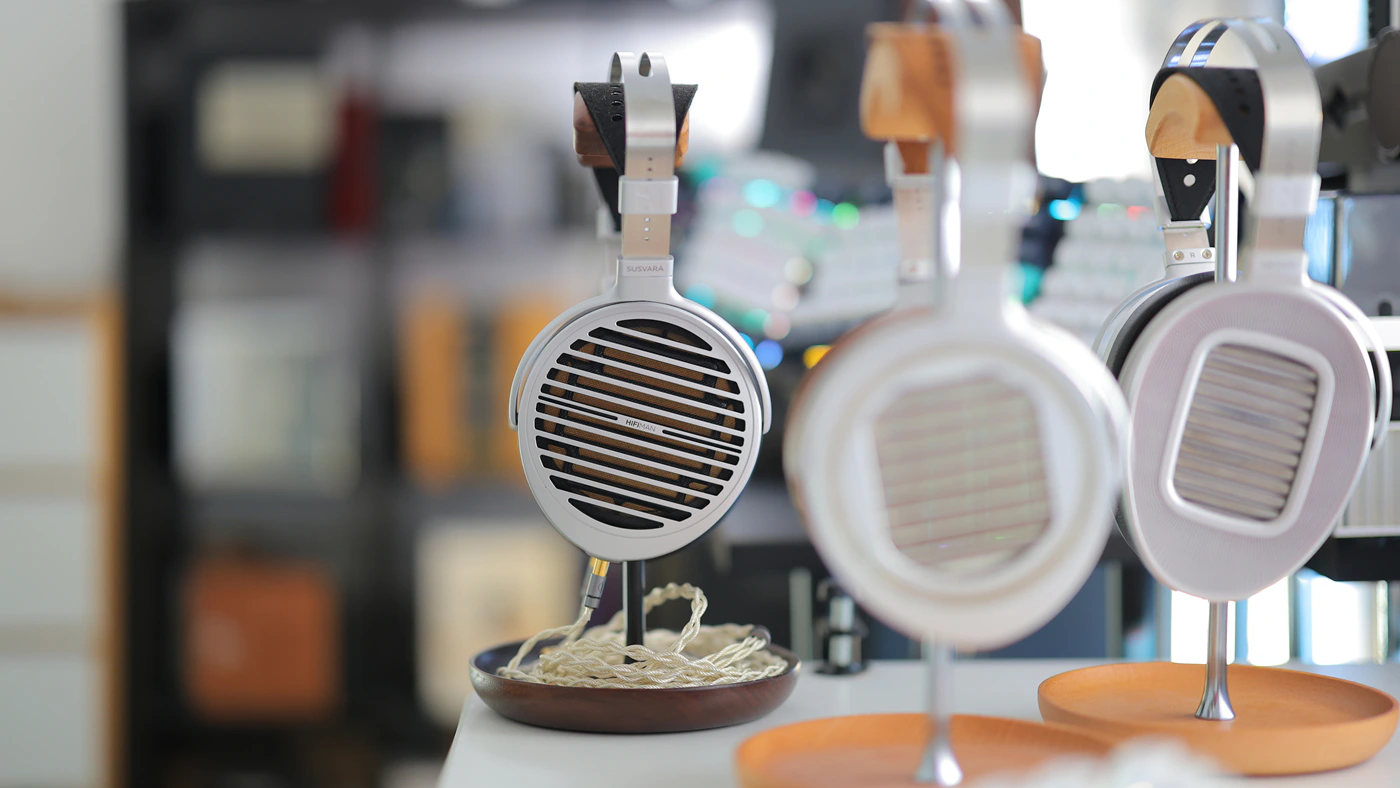
Frequency Response – 6 Hz – 75 kHz
Impedance – 60 OHMs
SPL – 83 dB
Weight – 450 grams
--- Please remember to stay safe, and always have fun while listening to music!---
- If you have a dime to spare, please donate, and help us! It would make the day brighter for me and my wife-
Full Playlist used for this review
We listened to more songs than those named in this playlist, but those are excellent for identifying a sonic signature. I recommend trying most of the songs from this playlist, especially if you’re searching for new music! The playlists are different for Spotify, Tidal and Youtube, and based on the songs I enjoy and are available on each!
https://www.youtube.com/playlist?list=PL_cjBXGmwSHSdGcwuc_bKbBDGHL4QvYBu
https://open.spotify.com/playlist/5J3oloz8Riy9LxEGenOjQ0?si=979ba4f082414be7
https://tidal.com/browse/playlist/330fd544-8e5b-4839-bd35-676b2edbb3d5
--- Contact Us ---





